Talent development represents a new era for recruiting and retaining quality employees. In this new era, there’s a need for a paradigm shift in the manner in which employee training is viewed and integrated within the fabric of organizations. Factors such as the type of technology used, quality of partnerships, programs offered, level of commitment to a learning culture, and management’s focus on talent development are great indicators of the maturity an organization talent development. Once the HR department is clear on their organization’s appetite for talent development, it is easier to start developing the most appropriate talent development strategy or improving an existing one.
Talent development is no longer confined to supplementary training and development acts that take place in a structured environment but is a strategic imperative that is all-encompassing throughout an organization. Managing paradigm shifts can be quite challenging so HR experts need to follow the right ways to build their talent development strategies. Here are five innovative approaches for improving a talent development strategy.
Turning to Technology
Human resource managers can use technology, including social collaboration, to make their talent management systems more efficient. A technology that is fully integrated with core human resource processes drastically shifts the way human resource managers approach talent management. It can enhance the effectiveness of individual talent processes.
Through technology, an organization can get the necessary insights for the rest of their businesses. HR recruiters or directors can use the services of experts such as Digi-Me to have their own data and processes so that they can compare and analyze seemingly unrelated data points and make the right decisions.
Planning Training and Recruitment
Talent tracking and workforce planning are also innovative ways to consider. Some organizations have left this role to leaders of their various businesses, but are actively engaged in employer branding. This is not a problem as long as they are strategic in their approach to talent development and want to facilitate organizational performance. They should also be staffed with learning professionals who offer quality guidance on matters relating to the improvement of performance. Their training budgets need also to increase with an increase in specific organizational needs. The objective is to ensure organizations achieve their strategic goals.
Training administrative processes are integrated into human resource processes and are automated. Digi-Me can help organizations to automate these processes and allow several formal learning programs to remain active at all time. However, this is not enough if everyone doesn’t take responsibility for learning.
Recruiting Competent Talent Development Team
Advanced talent development strategies, other than delivering learning beyond the classroom, includes an effective system of human resource coordinated functions. They are helpful in the recruitment, selection, development, reward, and re-training talent. This type of system promotes talent-rich organizations.
It’s the responsibility of the talent development team to ensure system alignment and develop and then oversee the implementation of talent development plans of the organization. The team needs to be composed of representatives involved in workforce planning, career development, succession planning, workforce training and development, recruitment and selection, performance management. Proper talent development strategies consider both existing and future needs, put in place pathways and plans for talent growth, and coordinate human resource processes and activities. By doing this, they promote and sustain all talent development efforts.
Increasing Talent Development Staff
Without a well-informed and well-trained cadre of talent development staff and partners, it’s impossible to successfully implement the right talent development strategies. An organization can solve this by offering training in human performance advancement and talent development so as to get strategic insight into the essential role of learning development in an organization and also develop opportunities for employee and intern details. The latter attracts people who are interested in learning about advanced training and development.
Furthermore, an organization can make the best use of the experience and interests of its members. This can be done by creating an adjunct faculty program of leaders, training of enthusiasts, and subject matter experts. It’s also appropriate to develop supervisor training skills so as to provide just-in-time training opportunities and make effective use of workplace learning opportunities.
Reinforcing Shared Values
Make it easy for employees to link their everyday tasks to the values in the organization. This way, they get to know why what they do in the company is important. It all starts by assessing, aligning, developing, and delivering effective learning experiences. The experiences help the organization to exploit its own capacity, complement its own culture, and facilitate the improvement and implementation of its strategic plan and performance objectives.
HR directors or HR recruiters can start by assessing the quality and effectiveness of their present learning and development efforts. They should consider whether they designed their learning opportunities in line with the principles of adult learning and instructional blueprint and whether the content is pertinent to the organization’s plan and objectives. It’s also appropriate to ask if there are gaps in training delivery approaches that can be incorporated into the organization’s talent development plan. Is it possible to develop and deliver social learning approaches to training? This question and the other considerations can help in determining the next steps in improving an organization’s talent development efforts. However, it’s also important to make sure the efforts on track and investments are bearing fruit by measuring and evaluating the impact of the learning experiences. When employees embrace their shared values, evaluation simply helps to figure out better ways of enforcing them.
The method an organization uses to measure and evaluate their shared values can mean the difference between success and failure. It’s safer to consider the views of participants on the efficiency of the training and then check whether they acquired the intended knowledge, skills, and attitudes. Additionally, the evaluation team can check on how each of the participants applies the acquired knowledge in their jobs and also confirm whether targeted results are being achieved.
Apparently, improving talent development strategies of an organization is not easy. However, it is a worthwhile process. The dedication of an organization to proper training is necessary for the creation of an atmosphere that encourages talent development. The maturity of the organization’s training function is a clear indicator of the organization’s appetite for talent development.







